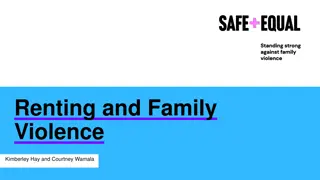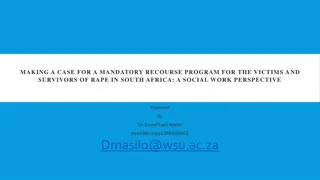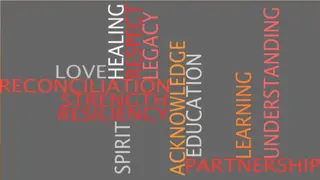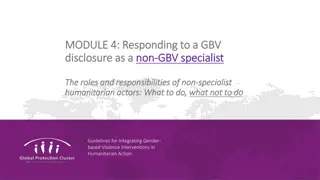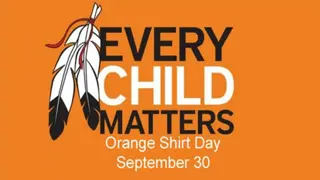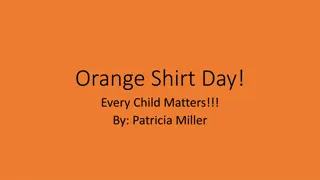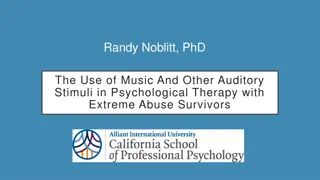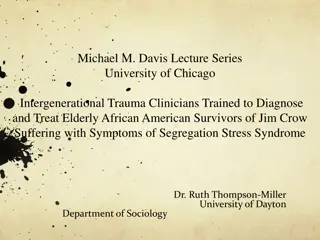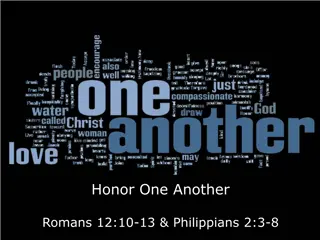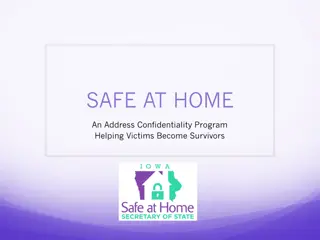Understanding Orange Shirt Day: Honoring Residential School Survivors
Orange Shirt Day is a national movement in Canada to recognize and honor the experience of students of Indian Residential Schools. It began in 2013 to acknowledge survivors and remember those who did not return home. Phyllis Webstad's story of losing her orange shirt at a residential school highlights the impact of these institutions. The schools were created in the 19th century as part of a government policy of aggressive assimilation, aiming to eradicate indigenous culture and language. September 30 is designated as Orange Shirt Day to commemorate the children taken to the schools.
Download Presentation

Please find below an Image/Link to download the presentation.
The content on the website is provided AS IS for your information and personal use only. It may not be sold, licensed, or shared on other websites without obtaining consent from the author. Download presentation by click this link. If you encounter any issues during the download, it is possible that the publisher has removed the file from their server.
E N D
Presentation Transcript
Orange Shirt Day! Every Child Matters Honouring Residential School Survivors and Remembering Those Who Didn t!
What is Orange Shirt Day? It is a national movement to recognize and acknowledge the experience of students of Indian Residential Schools, to honour the survivors and those who did not make it home. Orange Shirt Day began in 2013 This initiative asks for every Canadian to wear an orange shirt on September 30 in the spirit of healing and reconciliation.
Why September 30? September 30 was chosen because it was during that time of the year that children were taken from their homes and communities to the residential schools.
Phyllis Webstad : the inspiration for Orange Shirt Day Phyllis Truth I went to the Mission in 1973/1974. I had just turned 6 years old. I lived with my grandmother on the Dog Creek reserve. We never had very much money, and there was no welfare, but somehow my granny managed to buy me a new outfit to go to the Mission school. I remember going to Robinson s store and picking out a shiny orange shirt. It had string laced up in front, and was so bright and exciting just like I felt to be going to school! When I got to the Mission, they stripped me, and took away my clothes, including the orange shirt! I never saw it again. I didn t understand why they wouldn t give it back to me, it was mine! The color orange has always reminded me of that and how my feelings didn t matter, how no one cared and how I felt like I was worth nothing. All of us little children were crying and no one cared. I was 13 years old and in grade 8 when my son Jeremy was born. Because my grandmother and mother both attended residential school for 10 years each, I never knew what a parent was supposed to be like. With the help of my aunt, Agness Jack, I was able to raise my son and have him know me as his mother. I went to a treatment centre for healing when I was 27 and have been on this healing journey since then. I finally get it, that the feeling of worthlessness and insignificance, ingrained in me from my first day at the mission, affected the way I lived my life for many years. Even now, when I know nothing could be further than the truth, I still sometimes feel that I don t matter. Even with all the work I ve done! I am honored to be able to tell my story so that others may benefit and understand, and maybe other survivors will feel comfortable enough to share their stories. https://www.youtube.com/watch?v=ll1pUrK29MM
Why were these residential schools created? In the 19thcentury the Canadian government believed it was responsible for education and caring for Aboriginal people in Canada. They believed the best way to make them successful was to have them learn English and adopt Christianity and Canadian customs. Ideally, they would pass their adopted lifestyle on to their children and native traditions and languages would be completely abolished in a few generations. It was believed that aboriginal culture would be unable to adapt to a rapidly modernizing society and so to be successful Aboriginal people would have to be assimilated into mainstream Canadian Society by praying and speaking like other Canadians. The government at the time developed a policy called aggressive assimilation to be taught at church- run and government- funded schools called residential schools. The government felt that children were easier to mold than adults, and taking them away from their families was the best way to prepare them for life in mainstream society.
Who administered these schools? Residential schools were funded by the Canadian government and run by the Catholic, Anglican, and other churches, under the department of Indian Affairs. Attendance was mandatory. Agents, called Indian Agents , were employed by the government to ensure all native children attended.
More questions you may have.. 1. How many years did the residential schools run throughout Canada? The first one opened in 1831 and the last one closed in 1996. Soooo . 165 years! 2. How many children attended these schools throughout Canada? There were a total of 130 schools in every province and territory except PEI, Newfoundland and NB. In all, 150,000 First Nation, Inuit and Metis children were removed from their communities and forced to attend residential school.
3. What was it like to attend those schools? Students were taught to do physical labour such as cleaning, cooking, sewing and farm work to maintain the schools. They spent a few hours a day in the classroom. Students lived in substandard conditions and endured physical, emotional and sometime sexual abuse. They rarely had opportunities to see examples of normal family life. 4. Was there a residential school in our area? Although there was no school in NB, PEI and Nfld, the Mi kmaq and Wolastoqiyik (Maliseet) children attended the Shubenacadie, NS Indian Residential school. This school was run by the Catholic church. It opened in 1929 and closed in June of 1967.
5. Are there any Residential School survivors still living? In 2011, there were 80,000 people living who had survived the residential school experience 6. How many children did not survive? In 2015, it is believed that 6000 children died while attending Residential school. There could be many more as there are unmarked graves. Every residential school had a graveyard adjacent to it.
Effects of attending Residential School The aims of assimilation meant devastation for those who were subjected to years of abuse. Loss of traditional languages Loss of culture and traditional knowledge Disconnect from family and community; when students returned to the reserve, they often found they didn't belong. They didn't have the skills to help their parents, and became ashamed of their native heritage. Intergenerational Trauma- Where the trauma of Residential Schools continue to be felt by families for many generations.
What does reconciliation mean? According to the Oxford dictionary the definition of reconciliation is: 1) The restoration of friendly relations 2) The action of making one view or belief compatible with another:
What does reconciliation mean to Aboriginal Peoples? To provide support towards efforts to improve and enhance relationships and between Aboriginal and non-Aboriginal people. To recognize/celebrate the strengths, courage, resiliency and achievements of Residential School survivors and all Aboriginal Peoples. To contribute to a sense of identity, unity and belonging. To promote Aboriginal languages, cultures, traditional and spiritual values. To remember in a tangible and permanent way the residential school experience.
What can you do? Participate on September 29 (this year) by wearing an orange shirt to honour Residential School Survivors and those who did not get to go home Educate yourself on First Nation history, culture and traditions and share with others Be kind to one another!
Reconciliation Quote By walking this path together in a journey to reconciliation through education we will create a new history: a history that every Canadian, Aboriginal and non-Aboriginal, can stand behind, be proud of and celebrate.
Reflection Activity Reflection Activity What does reconciliation mean to you? Has the relationship between Indigenous and non-Indigenous Peoples improved? - If yes, how do you know? Why do you think the relationship has improved? - If no, why do you think there hasn t been much improvement? What do you think our communities and schools can do to make positive changes?



